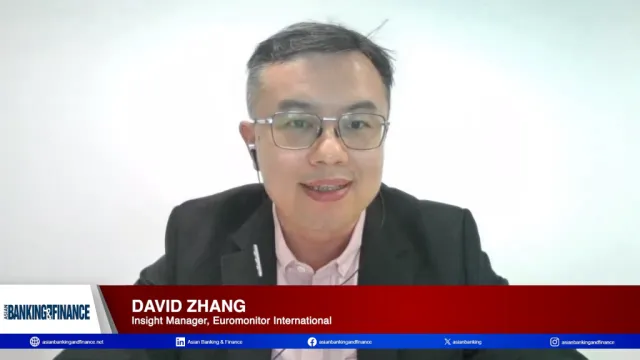
Mergers and closures loom for China's 3,800 rural banks
About 70 rural banks have already undergone mergers since 2023.
China is in the process of cleaning up its embattled rural financial institutions — a move that will not just lead to the mergers and closures of its 3,800 rural financial institutions, but also see the number of major banks shrink.
In just one week in July, 40 banks disappeared in China. Of these, 36 were absorbed by Liaoning Rural Commercial Bank, whilst Jiangxi Bank collapsed according to reports by local media.
These disappearances were inevitable. In fact, China was behind the scheme, having already spearheaded the merger of 70 rural banks since 2023.
“There is an oversupply of rural financial institutions, leading to operational disorder and increased risks,” Betty Huang, economist at BBVA Research, told Asian Banking and Finance. “China’s small, rural banks are confronted with deep-seated issues such as aggressive lending practices, inadequate risk management, and exposure to a downturn in the property market.”
These banks have also heavily lent to developers and local governments, leaving them vulnerable to fluctuations in the real estate sector and China’s slowing economic growth, Huang said.
Too many, too small
China’s issues boil down to two things: there’s too many of them, but the total assets are too small.
Authorities cannot just close the troubled lenders, however, else they risk incurring the people’s wrath.
“Given their role in local economies, allowing these institutions to fail risks destabilising communities and causing social unrest,” Huang warned.
As of December 2023, mainland China has a total of 3,796 rural financial institutions, of which 1,607 are rural commercial banks. This makes up 84% of all of China’s financial institutions.
In contrast, their total assets amounted to only RMB56.8t, at an average of RMB15b per institution — just 3% of the average asset value of city commercial banks.
This is because rural financial institutions serve small local communities and agriculture, which equate to limited asset scales. This leaves them vulnerable to the high risks of the local rural market, Huang said.
“Notably, some institutions have reported non-performing loan ratios as high as 40%, significantly above the industry average of 1.6% as of the first quarter of 2024,” she said, adding that their provision coverage ratios also fall below the supervisory requirement of 150%.
10-year journey
China’s strategy has been to pursue consolidations alongside regulatory reform. This was seen in the consolidation of the Liaoning Rural Commercial Bank; and analysts believe that this trend will continue.
The clean-up process will take some time — up to 10 years, according to Ryan Tsang, primary credit analyst for S&P Global Ratings.
“The process could take up to a decade. We reckon that it would take four to five years to substantially clean up the high-risk rural financial institutions, and it would take another few years to reorganise these lenders and institutionalise changes in corporate governance, management structure and risk culture,” Tsang said.
He expects authorities to form new institutions in the likes of Liaoning Rural Commercial Bank. These will take over weak lenders or encourage the stronger ones to absorb weaker players.
Major banks are expected to play a role in this clean-up. Looking ahead, the list of major banks may shrink rather than expand, Huang said.
“Key trends include mergers and reorganisations, where larger banks absorb smaller, failed ones, and rural reform support — such as transforming village banks into bank branches — to centralise operations,” Huang added.
Properly structured, depositors may not incur losses despite bank closures, according to Huang.
Failures
The risk and probability of failures remain likely, however.
“There is a moderate likelihood of further bank failures, particularly amongst rural and village banks that have significant exposure to risky sectors such as real estate or local government financing,” Huang said.
“Conversely, smaller and poorly managed rural banks may face closure due to financial instability or regulatory pressures,” she added.
The consolidations will lead to job losses and may have regional economic impacts if branches close.
The government has much to absorb in terms of losses, too. S&P’s Tsang expects capital injections from local governments, local state-owned enterprises, and investors.
“Holders of capital instruments of a failed bank are likely to bear losses, and institutional creditors could also see some haircuts,” he said.
The long-term effects are expected to enhance China’s financial stability and manage risks within the banking system, according to Huang.
“In the long run, surviving banks could benefit from increased efficiency and enhanced risk management capabilities. This is evidenced by strengthened supervision — where regulators can focus more resources on overseeing larger, more systemically important institutions — and improved financial health,” she said.
This could stabilise the sector by reducing non-performing loans and improving overall asset quality, according to Huang.
“Moreover, consolidation may increase market concentration amongst surviving banks, potentially impacting competition and pricing,” she said. Huang added that the timely acquisition of significant regional banks will prevent bank runs and panics.
Real estate woes
The property sector remains a key issue weighing on the banking system.
In a separate report, S&P primary credit analyst Ming Tan projected that the non-performing loans (NPL) ratios for property development will rise to 6.4% in 2025.
“China's property downcycle is poised to continue. We expect excess supply and weak demand in lower-tier cities to continue. This continues to weigh on the quality of property development loans, including those of surviving property developers,” Tan said.
In the first two months of 2024, nationwide property sales were down 29.3% from the previous year, noted Tan, based on data from China’s National Bureau of Statistics.
Even before that, the sector has been a major headache for banks with several developers having defaulted on their loans since 2021.
“Many Chinese property developers have accumulated high levels of debt, raising concerns about their ability to repay loans. This poses risks to financial institutions that have lent extensively to the sector,” Huang said.
From the retail customers’ side, housing affordability has emerged as a key concern in major cities.
“Excessive economic reliance on real estate attracts substantial capital inflows, driving asset prices to unsustainable levels, fostering economic illusions that eventually collapse,” Huang said.


















 Advertise
Advertise







